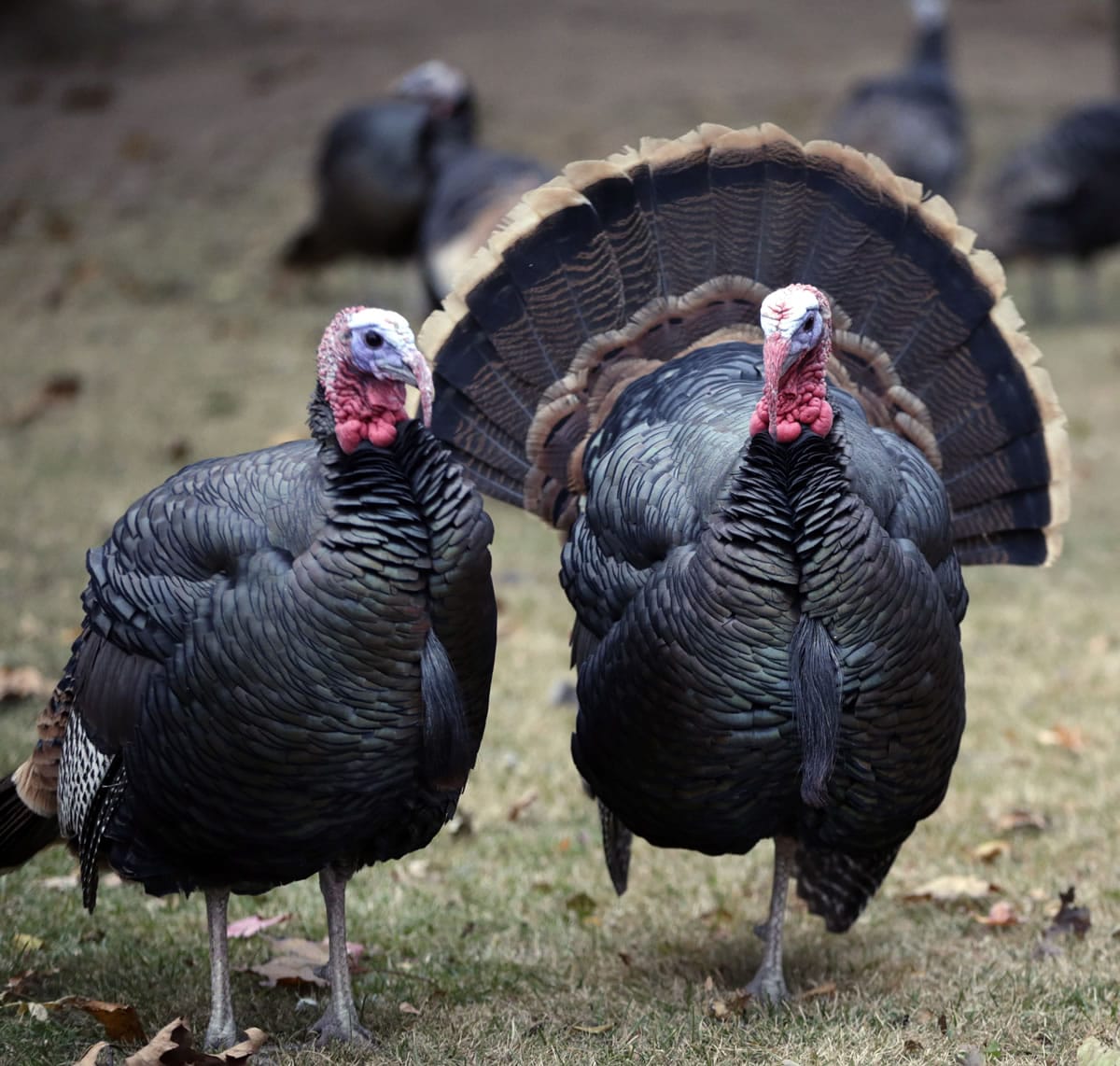Turkeys are an ungainly mess of a bird. Their bodies appear too big for their scrawny legs, and they are pocked with all manner of bizarre anatomical structures, including snoods (fleshy bumps on their foreheads) and a dewlap (that distinctive flappy wattle under its neck). But amazingly, the bird — at least in its wild form — can fly.
Granted, it’s not the graceful soaring of an eagle or the darting flight of a hummingbird — but the bird can lift off the ground. In fact, as Charles Darwin could have told you, a wild turkey is amazingly well adapted for explosive, short-distance flight, perfect for escaping predators.
“Turkeys spend 99.999 percent of their lives on their legs, so they’re built a little like a hoofed animal,” notes Ken Dial, a professor of biology at the University of Montana who studies animal flight. “Their bodies are squashed laterally, with their knees pulled in and their legs splayed. The legs have excellent circulation to supply fuel for sustained running.”
Those powerful legs also come in handy when a turkey decides to fly. Just before takeoff, the bird squats slightly, then explodes upward from its legs to get the process started. Contrast this with the takeoff style of an albatross, which needs a fairly long runway to achieve liftoff, a little like a fully loaded jetliner.
Once airborne, the turkey’s wings come to life. Unlike the muscles of the hind limbs, which are made for sustained use, the breast muscles that power a turkey’s wings are built for rapid but brief exertions. A wild turkey rarely flies more than about 100 yards, which is usually enough to bring it to safety. (Glycogen, the energy-carrying chemical that feeds a turkey’s breast during flight, “is used up very quickly,” Dial says. “It’s something like nitro fuel for a dragster.”)
The wing architecture also carries an indication of the turkey’s flight habits. Turkey wings are highly cupped, a trait known in aerodynamics as camber, which enables quick takeoff.
If you’ve ever been to a turkey farm, you know that domesticated turkeys — the kind most of us eat — do not fly. Why?
Their breasts became too strong. Farmers prize turkeys that grow large breast and thigh muscles, because those are the most valuable parts in the poultry market. Over time, farmers have bred turkeys to have larger and larger breasts.
A turkey breast gets stronger as it gets larger, but the animal’s power-to-mass ratio diminishes, so it can’t flap quickly enough to support sustained flight. In a sense, its exactly the opposite of what happened to the now-extinct dodo. When that bird’s flying ancestors arrived on the predator-free island of Mauritius, building powerful wings became a waste of energy. Over the generations, the dodo’s breast muscles grew too weak to enable it to fly.
The domesticated turkey’s massive breast muscles also begin to stretch the tendons and ligaments that hold the animal together, and the shoulder joint gradually pushes apart, further inhibiting flight. (Wild turkeys, in contrast, have strong, stable shoulder joints.)
There’s probably an element of psychology involved as well. “Farmers want turkeys that use every calorie of feed to build muscle,” Dial says. “Birds that are anxious or jittery and attempt to fly away at every provocation waste their calories. So farmers have probably bred the motivation to fly out of their turkeys.”
Living conditions also discourage turkeys from staying in flying shape. Factory-farmed turkeys are often kept indoors or in tiny spaces that don’t allow them to spread their wings and take off. Natural predators are kept at a safe distance. Those birds that are raised on more-spacious ranches are more likely to at least attempt a quick takeoff and a brief flap.
If turkey is on the menu at your Thanksgiving this year, take a moment to appreciate the wondrous creatures from which your bird is descended. The wild turkey is among the five largest flying birds in the world, along with swans, the giant albatross, South America’s giant vultures and the kori bustard, an African bird. Peaking at around 29 pounds, wild turkeys can weigh more than many 3-year-old children. If you equipped your preschooler with a well-cambered set of wings, she would have absolutely no hope of getting airborne for even a moment, even if you might like her to fly away for a few minutes while you’re preparing your Thanksgiving dinner.



